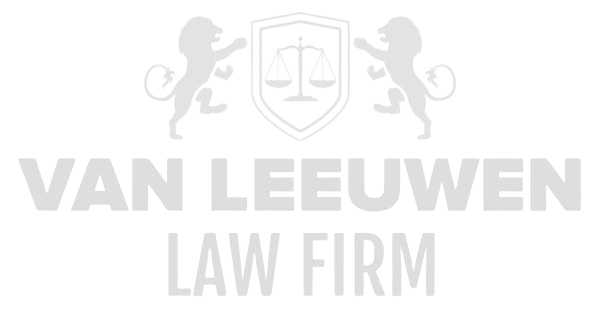In times of acute and severe crises, Article 176 of the Municipalities Act constitutes a crucial instrument within the government’s arsenal for safeguarding public order and security. Emergency regulations are not conventional legislative measures but exceptional tools specifically designed to manage situations in which ordinary laws and regulatory procedures prove inadequate. The exceptional nature of these regulations requires careful legal consideration, as they directly intervene in the fundamental rights and freedoms of citizens. In contexts of large-scale natural disasters, terrorist threats, or pandemic emergencies, the government can impose stringent measures through an emergency regulation that could not be implemented within the necessary timeframe through standard legislative processes. The immediate character of these measures has far-reaching legal implications, both for the enforcement of public order and for the protection of the rights of citizens and businesses who, sometimes inadvertently, suffer harm from non-compliance or may themselves face legal sanctions.
The emergency regulation functions as a legal lever to neutralize direct threats to society. The scope of this authority is clearly defined in Article 176 of the Municipalities Act, but the practical application and enforcement of such measures are complex and require a precise interpretation of proportionality and subsidiarity. Once a regulation is issued, the responsibility for both legal legitimacy and operational implementation rests with the mayor, who must operate within the strict limits of the law while ensuring effective protection of society. Citizens and businesses often find themselves in a vulnerable position; non-compliance with the emergency regulation can lead to immediate legal consequences, while over-compliance or interpretive errors can result in economic or reputational damage. In situations where enforcement overreaches or measures prove disproportionate, the legal framework of Article 176 provides mechanisms for evaluation, revocation, and adjustment, maintaining a delicate balance between necessity, effectiveness, and the principles of the rule of law.
Application in Extraordinary Circumstances
Emergency regulations are applied exclusively in situations where ordinary enforcement and administrative mechanisms have proven insufficient to mitigate acute threats to public order and safety. This encompasses scenarios such as large-scale riots, natural disasters with immediate infrastructure impact, or sudden threats of critical importance, including bomb threats or dike breaches. The legal scope of Article 176 allows measures to be directed at an indefinite number of persons as well as specific areas or buildings, emphasizing the immediate enforcement of order and security. In practice, this means that citizens and businesses within the designated zones must comply with strict behavioral rules, regardless of whether they are directly involved in the origin of the crisis. The severity of the situation determines the duration and intensity of the measures, with the mayor serving as the central coordination point, responsible for defining the area, formulating behavioral instructions, and coordinating with the police and other security services.
The legal justification for emergency regulations requires a detailed analysis of the causal link between the acute threat and the necessity of drastic measures. Each measure must be explicitly motivated, including an assessment of expected effectiveness and the impact on the affected population and enterprises. The importance of the measure extends beyond mere crisis management; it also provides a legal framework legitimizing enforcement by police and municipal authorities. For businesses, non-compliance is not merely an administrative offense but can constitute a direct violation of the law, with potential criminal consequences under Article 443 of the Criminal Code. This strict application underscores the emergency regulation as an instrument deliberately operating outside regular procedures, yet functioning firmly within the boundaries of the rule of law.
Operational implementation of the emergency regulation requires seamless coordination between local government, police, fire services, and other relevant authorities. In acute situations, this can lead to unforeseen escalations, where citizens or businesses failing to comply immediately risk becoming subjects of direct intervention by law enforcement. This may range from forced evacuations to criminal sanctions for violating behavioral rules. The legal framework, however, provides mechanisms to correct disproportionate application, such as evaluation, modification, or revocation of measures, ensuring that the instrument remains both effective and constitutionally sound. The essence of Article 176 lies in the combination of speed, force, and legal legitimacy, ensuring the protection of society without undermining the fundamental principles of proportionality and subsidiarity.
Limitation of Fundamental Rights
One of the most significant aspects of emergency regulations concerns the temporary limitation of fundamental rights. Freedoms such as religion, expression, assembly, and demonstration may be restricted under specific circumstances, along with protections of personal privacy. These limitations are not arbitrary but must be justified by the necessity to maintain public order and security. Each decision to limit rights must adhere to the principles of proportionality and subsidiarity, meaning that less intrusive measures must be considered before more drastic actions are taken. This requires a careful weighing of interests, measuring the impact on individual rights against the direct security benefits for society.
In practice, these limitations can have substantial consequences for businesses and citizens. For entrepreneurs, an emergency regulation may restrict access to business premises or impose temporary closures, while citizens may face prohibitions on public gatherings, religious ceremonies, or demonstrations. Failure to comply with these limitations can result in criminal penalties or administrative sanctions, creating both economic loss and reputational risks. At the same time, the law ensures that the measures are temporary, with an evaluation to follow once the acute emergency has passed. The mayor must explicitly justify why the limitations are necessary and how they fit within a proportionate legal framework.
Legal review of these limitations can occur retrospectively, for example through administrative law proceedings or by assessment against European standards such as the European Convention on Human Rights. For businesses and individuals who suffer harm due to restrictions, this provides an opportunity to seek compensation or legal redress. These mechanisms ensure that emergency regulations do not remain unlimited and that the balance between safety and legal protection is maintained. Simultaneously, this reinforces the legal authority of the measures, allowing enforcement to be both robust and effective, even in situations of acute threat.
General Application for “Everyone”
Emergency regulations generally apply to an indefinite number of persons within the designated area. This means that both residents and visitors of the affected area are immediately bound by the imposed rules. The legal consequences are extensive, as any violation can lead to criminal sanctions regardless of intent or awareness of the regulation. For businesses, this may mean that employees and customers are subject to behavioral requirements that temporarily restrict or alter operational activities. The mayor is responsible for clearly communicating the measures, ensuring that every affected person understands their obligations and that enforcement can be carried out effectively.
The impact on businesses and citizens can be substantial. For instance, non-compliance by an employee may result in the company’s legal liability, while individual citizens may face immediate police intervention or administrative sanctions. This highlights the importance of adequate notification and transparency, with publication and direct communication essential to ensure legality and enforceability. In practice, close coordination with emergency services and regional security authorities is required to make the regulations operationally feasible and legally defensible.
The broad application to “everyone” also strengthens the enforcement power of the regulation, as all individuals within the area are immediately bound by the emergency measures. Temporality remains a central principle: the regulation ceases once the emergency situation is lifted, causing temporary restrictions to automatically expire. This ensures a legally defined application in which the balance between acute safety and fundamental rights is maintained.
Ratification by the Municipal Council
An emergency regulation does not lose its democratic legitimacy simply because it is issued outside the ordinary legislative process. The municipal council plays a crucial role in ratifying the regulation retrospectively, ensuring oversight and legal validity. In exceptional cases, the King’s Commissioner may temporarily suspend the regulation until approval is granted, providing an additional layer of review. This ratification also serves as a tool for transparency and political oversight, as the mayor remains accountable for the measures taken and for the application of proportionality.
For businesses and citizens, this means that despite the acute implementation of an emergency regulation, a democratic and legal review is always possible. The council can later adjust or revoke measures, correcting disproportionate or unnecessary restrictions. This mechanism protects affected parties from prolonged or unjustified limitations of their rights.
The legal review through administrative law procedures remains consistently available. Citizens and businesses can challenge government actions, establishing a balance between the necessity of emergency measures and the protection of individual interests. The combination of immediate implementation and retrospective oversight renders emergency regulations a powerful yet legally controlled instrument.
Temporariness and Revocation
The temporary nature of an emergency ordinance constitutes a fundamental legal principle that ensures the legitimacy of measures within the rule of law. The validity of the measures is strictly tied to the duration of the acute emergency and automatically ends once the extraordinary circumstances have ceased. For businesses and citizens, this means that restrictions lapse by operation of law, allowing operational activities and personal freedoms to be fully restored. The mayor bears the responsibility to communicate the revocation of the ordinance in a timely and explicit manner to both enforcement authorities and affected parties, preventing legal ambiguities and enforcement conflicts. In practice, this communication requires careful coordination with police, municipal services, and regional safety authorities to ensure that the return to normal legal order occurs seamlessly without leaving risks to public order.
The legal implications of temporariness extend to the oversight and evaluation of measures. During and after the application of an emergency ordinance, mayors must explicitly document which measures were effective, which restrictions proved necessary, and which actions were potentially unnecessary or disproportionate. This serves not only as an instrument for administrative accountability but also provides a legal framework for businesses and citizens who have suffered damage due to the measures. For businesses, this may mean that claims for damages or compensation procedures can be based on demonstrable disproportionality or improper application of emergency measures. This systematic evaluation also contributes to the development of precedents and guidance for future crises, ensuring optimal proportionality and effectiveness.
The legal character of temporariness is essential to prevent prolonged violations of fundamental rights. By explicitly stating that measures are temporary, a safeguard is established against unnecessary expansion of powers or extended restrictions. For citizens and businesses legally challenged due to non-compliance, this time limitation is a crucial factor in assessing proportionality and necessity. Enforcement ceases automatically upon revocation, limiting legal liability to the duration of the emergency. This principle underscores the balance between the acute effectiveness of government action and the protection of individual and collective rights.
Application in Acute Dangerous Situations
The emergency ordinance is explicitly intended for use in situations of acute danger where direct protection of life, health, and property is necessary. This may include explosions, large-scale fires, dike breaches, or terrorist threats. Measures can range from evacuation of buildings and delineation of disaster areas to imposing restrictions on access and presence. For citizens and businesses, this means that operational and personal choices are directly affected by the ordinance. Non-compliance with these measures can result in immediate intervention by police and safety authorities, with legal and criminal consequences.
Application in acute danger requires continuous assessment of necessity and proportionality. Mayors must evaluate in real-time which measures are strictly necessary to prevent harm and which less intrusive alternatives are possible. For businesses, this may involve temporary suspension of production processes or restricted access to company premises, with immediate financial and operational consequences. Citizens entering the area or ignoring instructions face the risk of direct enforcement, potentially resulting in fines or other criminal sanctions.
Effective application in acute situations also requires extensive coordination with emergency services, police, and other safety agencies. Communication to the public is crucial to encourage compliance and prevent panic. For enterprises, this is strategically important, as clear guidance and alignment with authorities minimize liability risks. At the same time, the legal framework of Article 176 protects against arbitrary measures, allowing only strictly necessary and proportionate actions.
Access Restrictions and Behavioral Regulations
A key tool within emergency ordinances is the ability to regulate access to certain areas and impose behavioral requirements. This may mean that citizens or visitors are temporarily denied access to disaster areas, while businesses may be required to adapt operations to ensure safety. These measures are immediately enforceable and effective from the moment of publication. The purpose is both preventive and repressive: escalation of dangerous situations is avoided, while enforcement is legally binding.
Behavioral requirements and access restrictions are legally enforceable under Article 443 of the Criminal Code. Non-compliance may result in criminal prosecution, fines, or community service. For businesses, adherence to internal and external protocols is crucial to avoid legal liability, while citizens face personal risks for violations. This highlights the necessity for clear communication and precise instructions, both to the public and to employees of businesses operating in affected areas.
Moreover, behavioral requirements must be applied proportionately and subsidiarily. Only measures necessary to mitigate immediate dangers should be enforced. Mayors and enforcers must continuously evaluate whether restrictions are adequate and whether alternative, less intrusive options exist. For businesses and citizens suffering damage due to these measures, this provides a legal basis for objection or compensation if disproportionality can be demonstrated.
Criminal Liability for Violations
The legal enforceability of an emergency ordinance is reinforced by the explicit criminal liability for violations. Article 443 of the Criminal Code stipulates that non-compliance constitutes a criminal offense, granting police and enforcement authorities the power to intervene. This has far-reaching implications for citizens and businesses: violating behavioral or access restrictions can lead to immediate legal sanctions, including fines and community service. For businesses, this necessitates robust internal compliance structures to prevent employees or customers from exposing themselves to legal risk.
Criminal liability for violations underscores the preventive character of the emergency ordinance. By creating a clear legal framework, compliance is promoted and risks to public order and safety are minimized. Citizens may face immediate intervention, while businesses may encounter operational suspensions or legal claims due to employee violations. This mechanism enhances the effectiveness of measures and ensures that acute safety risks are adequately mitigated.
The legal framework also allows for post hoc evaluation. Citizens and businesses may object to imposed sanctions or measures if disproportionality or unnecessary application can be demonstrated. This ensures that the application of emergency ordinances remains bound by rule-of-law principles and proportionality, which is essential to prevent temporary measures from causing unintended long-term legal or economic harm.
Principles of Proportionality and Subsidiarity
The principle of proportionality lies at the heart of every emergency ordinance. Measures may never exceed what is strictly necessary to maintain public order or avert acute danger. This means that citizens and businesses are only restricted in their rights to the extent that it directly contributes to risk mitigation. Less intrusive measures should always be deployed first, and the application of restrictions must be continuously evaluated for effectiveness and necessity. Mayors bear the responsibility of carefully documenting these assessments to allow for legal review afterwards.
Subsidiarity requires that alternatives to intrusive measures be explored first. For businesses, this might mean temporarily adjusting production or access to premises rather than complete closure or evacuation. Citizens are restricted in daily activities only to the extent strictly necessary. These principles ensure enforcement remains proportionate, transparent, and legally defensible, minimizing the risk of legal claims or reputational damage for affected parties.
Communication also constitutes a crucial tool for proportionality and subsidiarity. By clearly explaining which measures are in place, why they are necessary, and how they are enforced, compliance is strengthened and legal risk exposure for businesses and citizens is limited. This also reinforces public trust in government action, while enforcement remains effective and proportionate. The combination of immediate implementation, legal review, and post-event evaluation makes emergency ordinances a powerful instrument for protecting public order and safety without compromising fundamental legal principles.









